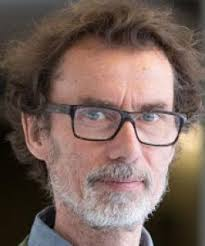 Tomas Paus Tomas Paus In preparation for OHBM 2020, we talked to Dr Tomas Paus, who will be giving a keynote lecture on Friday, June 26th. Dr. Paus is Director of the Population Neuroscience & Developmental Neuroimaging Program at the Holland Bloorview Kids Rehabilitation Hospital, and Professor of Psychology and Psychiatry at the University of Toronto. Roselyne Chauvin (RC): Thank you for taking the time to chat with us. In your talk you will be speaking about “population neuroscience and the growing brain.” There are a few ongoing longitudinal big data initiatives, such as ABCD or generation R. Those projects are now starting to think about the current pandemic situation. On one side, the situation is affecting everyone without discrimination; on the other, government responses create different experiences (from full to partial lockdown, to no restrictions), and of course, individuals show different stress responses. How do you think this might affect longitudinal datasets? And what are the questions that will need to be investigated out of this situation with regard to psychiatry and genetics?
0 Comments
Your comment will be posted after it is approved.
Leave a Reply. |
BLOG HOME
Archives
January 2024
|
 RSS Feed
RSS Feed